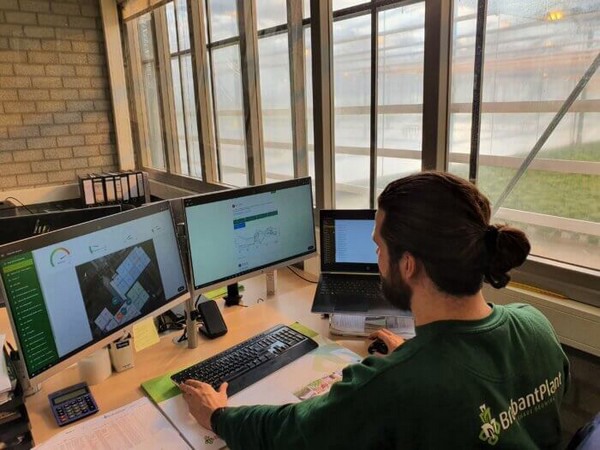Brabant Plant connected their climate computer to the 30MHz platform early 2020. This led to valuable benefits. Cultivation researcher Marvin Verkuijlen tells us about his experiences with the integration. “Now it’s easier to compare different compartments.”
Brabant Plant is a Dutch family business that focuses on breeding young vegetable plants and pot plants. Apart from being an nursery, the company has a big research and development department. This is where Marvin Verkuijlen spends his days. He loves to use innovations and it’s his job to connect the dots between theory and practice.
“Data is something we discuss a lot at Brabant Plant,” says Marvin. “I have many colleagues with decades of experience. They are able to spot data fluctuations with their bare eyes. As a researcher, I discuss these observations with them. I look at the plant from a physiological point of view and I combine my knowledge with our in house experience. That’s valuable teamwork.”

Connecting your climate computer
Various data sources help Marvin to gather information. For example he analyses data regarding the use of different screens in the greenhouse. “This is a big company with lots of different compartments. I can use my Priva climate computer to check upon the climate situation in a specific area, but it doesn’t allow me to make a quick comparison to a different area.”
About a year ago Marvin connected the climate computer to 30MHz. This means all the data the climate computer gathers, is transferred to the platform. “With 30MHz’s platform I can overlay data from various compartments. This makes it easy to compare compartments.”

Data pool with usable information
Marvin uses the Pointed Micro Climate sensor to measure the difference between the climate above and under the screens. “We place one sensor on a high point in the greenhouse, the other one on plant level. We also use this method for comparisons within a compartment, like comparing the left side to the right side. This creates a data pool with usable information”, says Marvin.
As a grower that focuses on young plants, Brabant Plant has a concrete floor. This is a big difference compared to growers with big tomato or pepper plants, because much more sunlight reaches the bottom of the greenhouse. At Brabant Plant they monitor the floor conditions carefully. Marvin: “Do we have to change the screen settings? Do we have to adjust the cooling settings? These are questions that you can answer by monitoring your data.”
Via Klimlink huge amounts of data can be integrated into the 30MHz platform. “The setup was easily realised. If you think about the amount of data that is being imported, I’m surprised how smoothly it runs,” says Marvin. “All sensors are easily recognisable in the system. I especially like the way you can visualise your data in dashboards. And additional sensors can easily be added to the platform.”
Store and connect horticulture data
As a researcher in horticulture, Marvin expects data will get more valuable over time. “Data has always been collected in horticulture. It gives you a guideline for a specific moment. But if you store and connect all that data, you can discover interesting things. You can create a map and track how a plant disease moves through your company, to name an example.”
For more information: 30MHz
30MHz
Moezelhavenweg 9
1043AM Amsterdam
+31 (0) 6 14551362
contact@30mhz.com
www.30mhz.com
